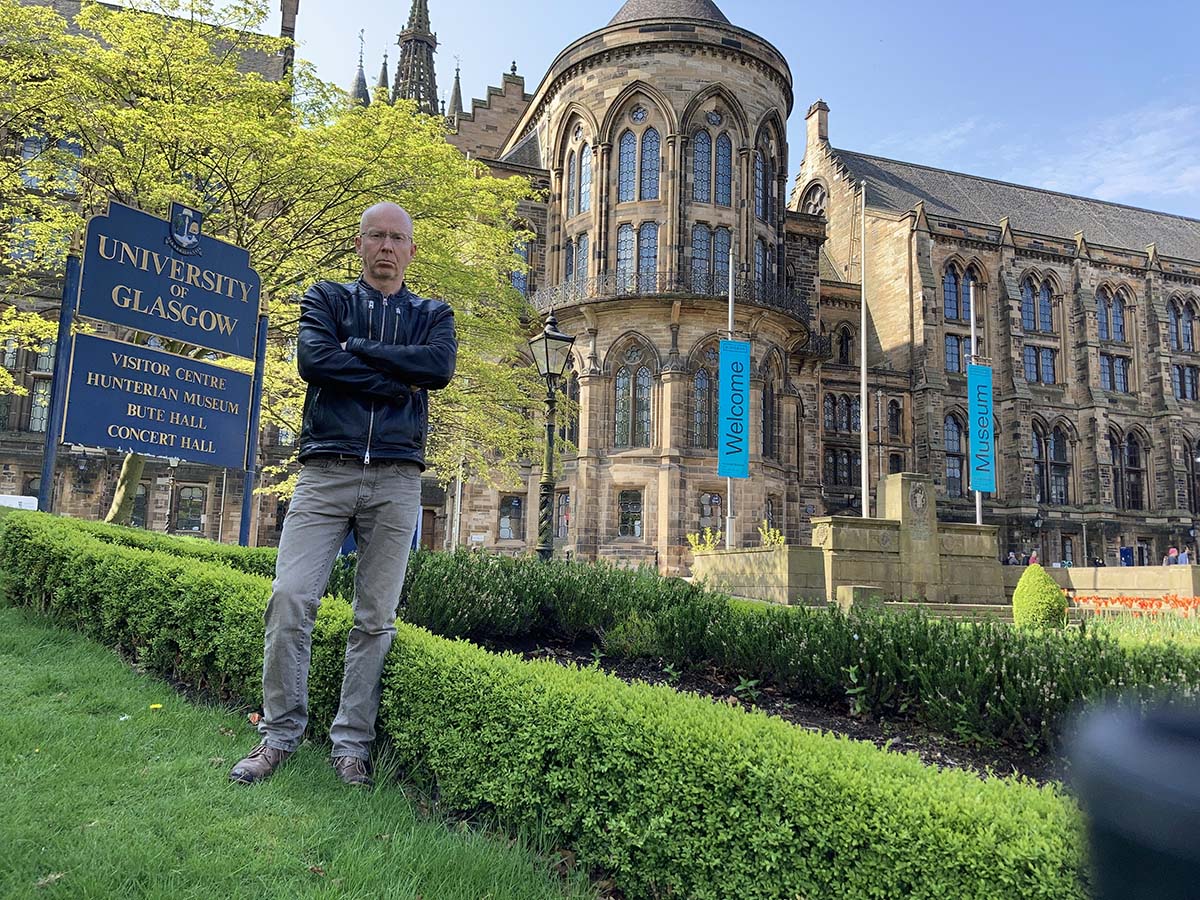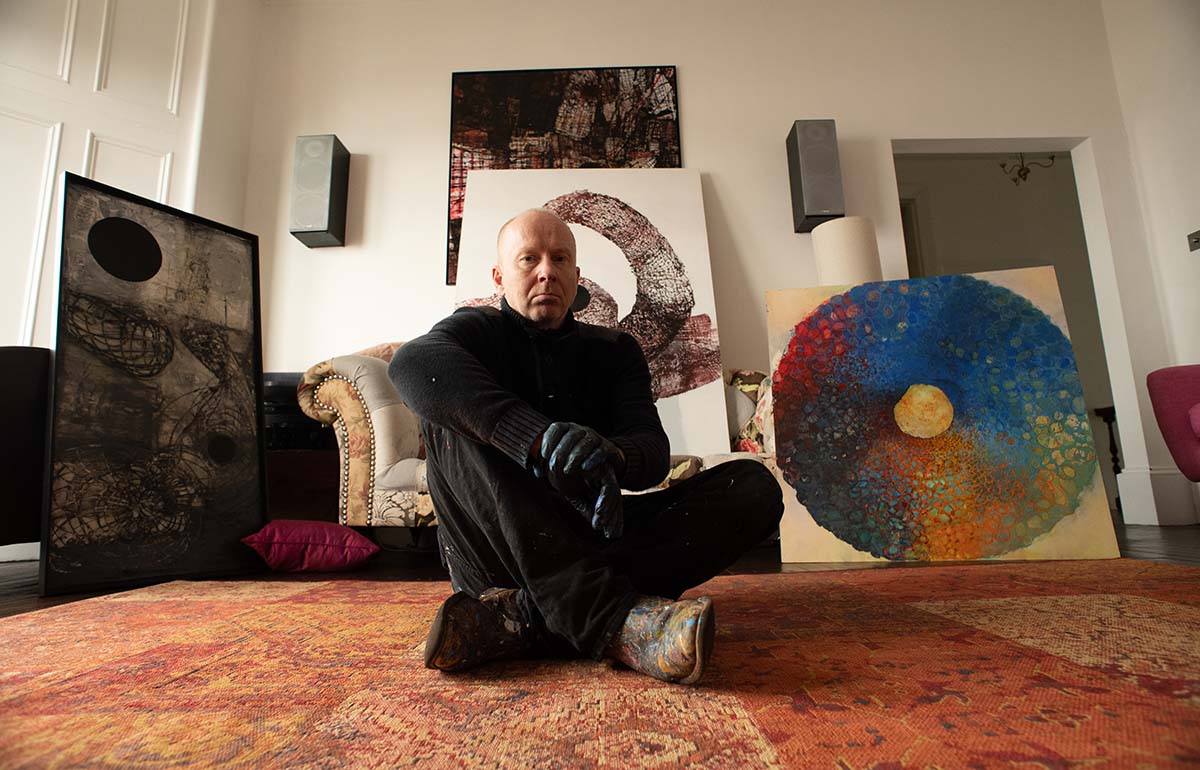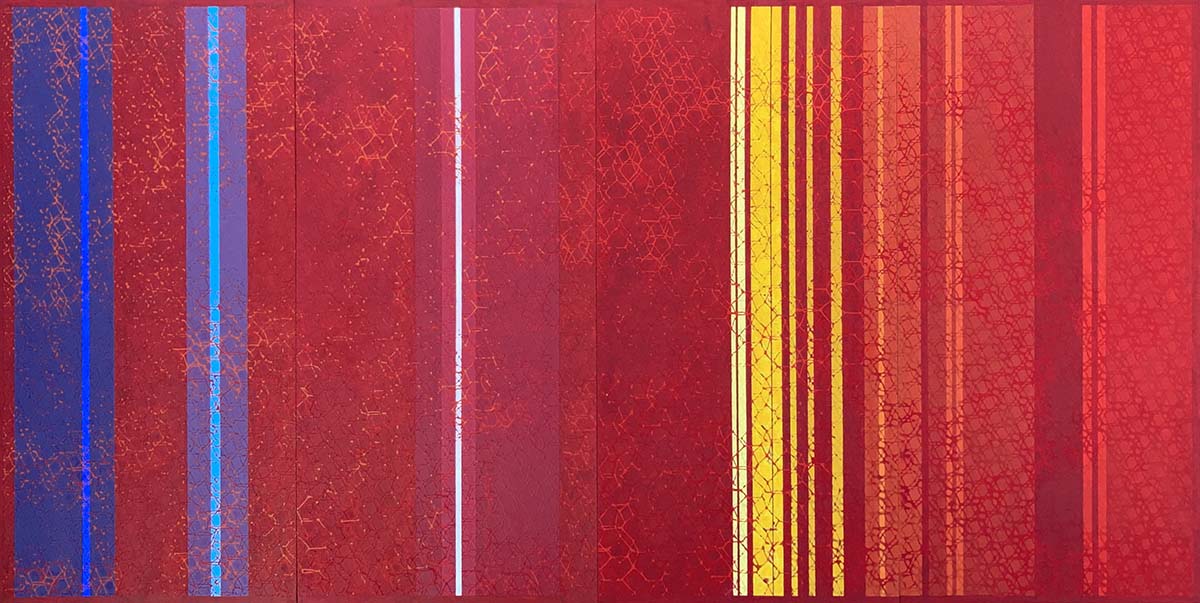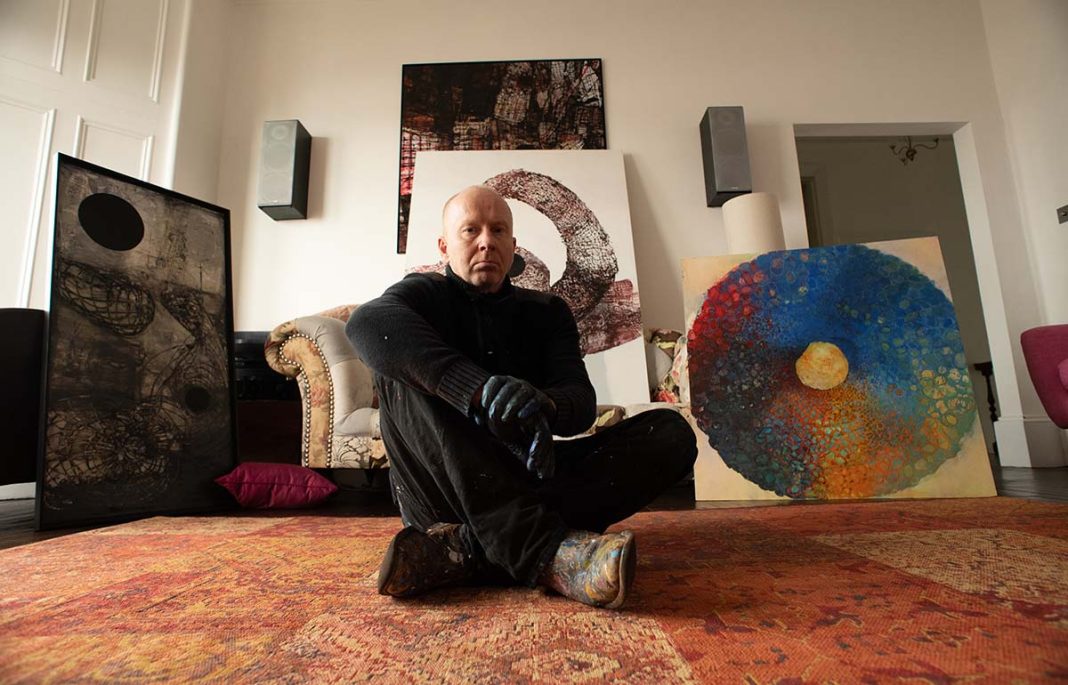Artist Gregor Harvie is intertwining art and science in his new show at The University of Glasgow in collaboration with Quantum Theory Group
You would expect the Quantum Theory Group (QTG) at the University of Glasgow to be pushing boundaries in their exploration of science. But they’re exploring the realms of art, too.
The renowned group of ‘big thinkers’ is collaborating with Scottish artist Gregor Harvie to create two large and dramatic paintings that explore what is known as ‘the light universe’ and ‘the dark universe’.
The start of the journey

Artist Gregor approached the QTG last Summer asking for help with his current work, which explores the nature of the universe.
Gregor, who has a strong scientific as well as artistic background, was invited to attend QTG meetings and struck up a friendship with the group’s eminent head, Prof Stephen Barnett.
As well as attending group discussions, Gregor has given talks to students and researchers. He recently spoke to the QTG about the work of scientist Lord Kelvin – one of the most prominent figures in the University’s history.

Last year, he spoke to students from the School of Physics and Astronomy about the relationship between art and physics.
This collaboration resulted in Gregor being commissioned by the university to create an installation of two large paintings to celebrate the bicentenary of Lord Kelvin.
Gregor says, “There is more common ground between science and art than you might think. Both are a search for patterns, for things that are recognisable and repeatable – progress in either requires a leap of the imagination.”
“The collaboration is a definite plus for us,” says Professor Stephen Barnett of the QTG. “Interesting questions come from everywhere. It’s about value and I think value includes a more rounded education. I think it’s simply a matter of being in an intellectually stimulating environment. And Gregor is part of that.”
Art and science intertwined

Gregor says, “There has always been a relationship between art and science. They draw on the same cultural and environmental knowledge and have often explored similar ideas.”
Two of the most important developments of the 20th century, Picasso’s cubism (1907) and Einstein’s theory of special relativity (1905), emerged almost simultaneously, both challenging our perception of reality.
Although Einstein and Picasso were not aware of one another, they were both influenced by the popular speculation of the time about four-dimensional geometry and both were aware of Poincaré’s book ‘Science and Hypothesis’ (1902) which discussed the relativity of the laws of physics in space.
In 1923 Einstein said: “After a certain high level of technical skill is achieved, science and art tend to coalesce in esthetics, plasticity and form. The greatest scientists are always artists as well.”

Gregor continues the idea, “We all get inspiration from fields beyond our own. We absorb influences from the pool of ideas that we swim in, and in turn the ideas we generate feed back into that pool and influence others.
“Will my paintings directly affect the work of the Quantum Theory Group? That may be fanciful, but could they strike a chord with someone, somewhere? Could they help open someone’s mind to new possibilities? I hope so; that after all is what art is for.”
The exhibition is open until July 9th at the Research Centre, University of Glasgow.
Research Centre
The University of Glasgow
G11 6EW
Visit Gregor Harvie’s website | Follow Gregor Harvie on Instagram
Want to know more about the Scottish art scene? Emily Powell is a more traditional painter than Gregor, but paints with beauty. We explore her newest collection about the Isle of Tiree below.
Emily Powell’s new art show explores the true spirit of the Hebrides





